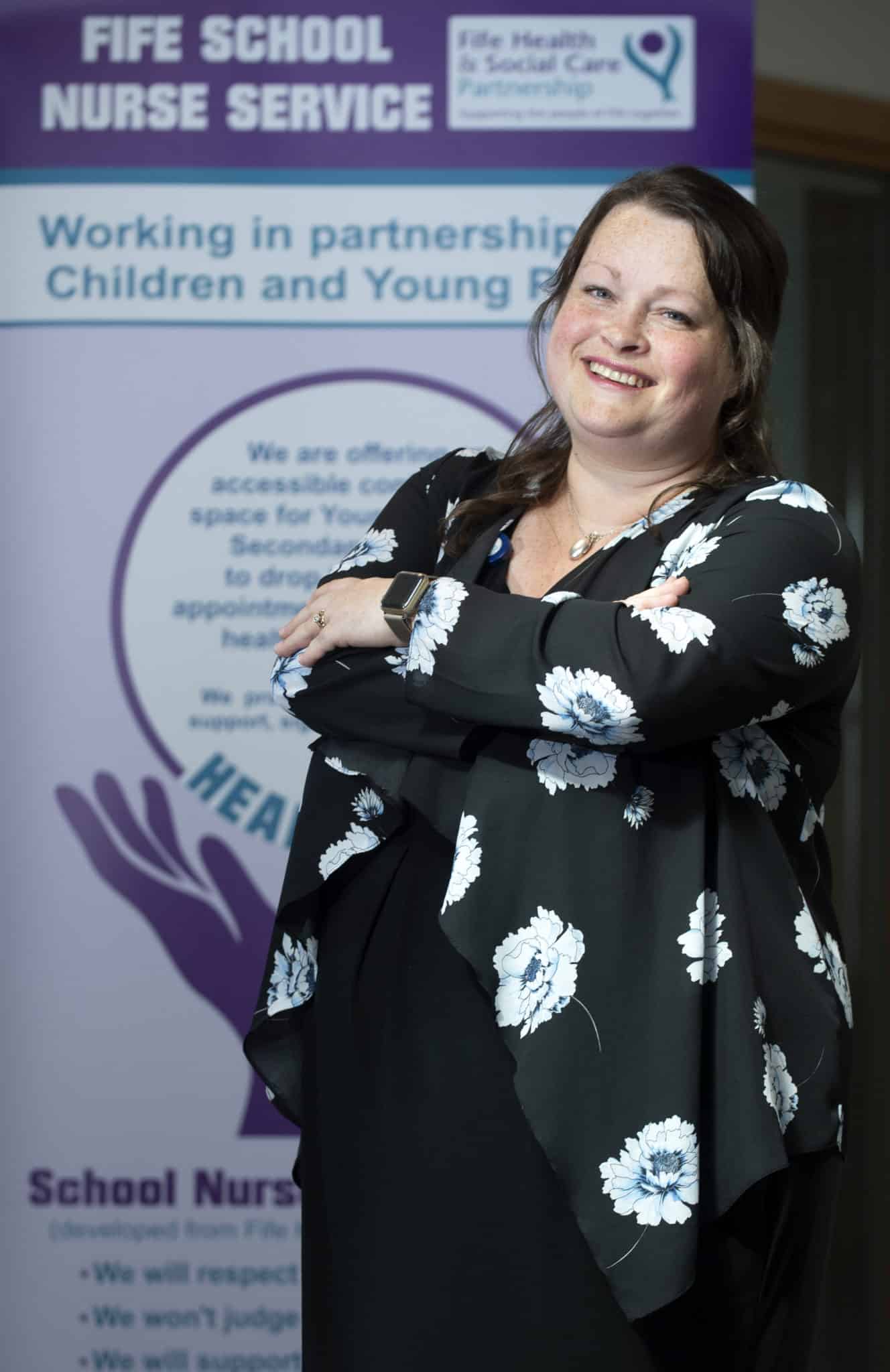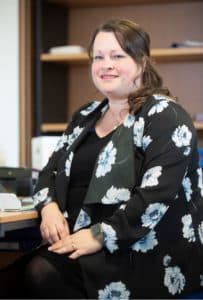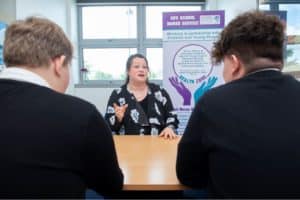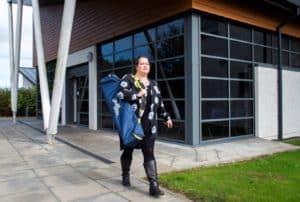Jen Grant
School Nurse
Fife

The Fife School Nursing Service works with children and young people aged 5-19 years old and their families, to assess and identify health needs. Our service has three bases across Fife. The base I work within covers Glenrothes to the Tay Road Bridge and all the towns and villages in-between. A full round trip of all the schools would be more than 100 miles. There are seven high school bases with approximately 8,000 pupils and 60 primary schools with around 9,000 pupils which vary in size from 1,500 pupils to rural schools with less than 20. The localities covered range from affluent areas to areas of considerable deprivation. We also have a residential Army base within the area, which means these can be transient families.
 While training as a nurse, I worked part–time with homeless young people. It became clear that their health was not viewed as important until the onset of acute illness, resulting in emergency care. Once qualified as a nurse I worked in acute hospital-based roles but recognised that I yearned to promote health and wellbeing and prevent ill-health rather than treat tertiary conditions. I jumped at the opportunity to work bank shifts in the community offering sexual health drop-ins, linked to youth clubs. This allowed young people access to a confidential space for health promotion, contraception, advice and support. I then had the privilege of being accepted into the first cohort of the Early Clinical Career Fellowship and obtained an MSc Public Health. This amazing opportunity provided a clearer understanding of public health perspectives. In 2012, I trained as a Specialist Community Public Health Nurse and began my career as a School Nurse in 2013.
While training as a nurse, I worked part–time with homeless young people. It became clear that their health was not viewed as important until the onset of acute illness, resulting in emergency care. Once qualified as a nurse I worked in acute hospital-based roles but recognised that I yearned to promote health and wellbeing and prevent ill-health rather than treat tertiary conditions. I jumped at the opportunity to work bank shifts in the community offering sexual health drop-ins, linked to youth clubs. This allowed young people access to a confidential space for health promotion, contraception, advice and support. I then had the privilege of being accepted into the first cohort of the Early Clinical Career Fellowship and obtained an MSc Public Health. This amazing opportunity provided a clearer understanding of public health perspectives. In 2012, I trained as a Specialist Community Public Health Nurse and began my career as a School Nurse in 2013.
 My approach is focussed on health promotion, early intervention and health protection. Up-to-date knowledge of the ever-changing local communities is vital to understand the wider impacting cultural and socioeconomic factors. An excellent working knowledge of the legislation, local and national polices, guidelines and frameworks that shape working with children and young people is required. As a School Nurse, I bring my expertise in adapting my communication style to the changing environments and those I am working with. This involves being brave and bold when having courageous and honest conversations about challenging topics, in order to ensure the most appropriate support and intervention is provided. I am passionate about advocating for the health and wellbeing needs of children and young people, as well as being a ‘trusted adult’ that can provide a confidential approach to build meaningful connections. This passion has motivated my participation in service development opportunities for example I piloted the implementation of Health Zones in high schools, offering a confidential drop-in service, which aims to reduce barriers for young people accessing health support. This led to Health Zones being introduced across Fife, which have been successful in enabling young people to have important conversations about their health in a safe space.
My approach is focussed on health promotion, early intervention and health protection. Up-to-date knowledge of the ever-changing local communities is vital to understand the wider impacting cultural and socioeconomic factors. An excellent working knowledge of the legislation, local and national polices, guidelines and frameworks that shape working with children and young people is required. As a School Nurse, I bring my expertise in adapting my communication style to the changing environments and those I am working with. This involves being brave and bold when having courageous and honest conversations about challenging topics, in order to ensure the most appropriate support and intervention is provided. I am passionate about advocating for the health and wellbeing needs of children and young people, as well as being a ‘trusted adult’ that can provide a confidential approach to build meaningful connections. This passion has motivated my participation in service development opportunities for example I piloted the implementation of Health Zones in high schools, offering a confidential drop-in service, which aims to reduce barriers for young people accessing health support. This led to Health Zones being introduced across Fife, which have been successful in enabling young people to have important conversations about their health in a safe space.
 I was awarded the NHS Fife Staff Achievement Award for Community Nursing, following submission of a young persons written account about the non-judgemental support she had received. Another example was a pupil who had been referred for support for low mood, but after missing appointments further discussion revealed poverty at home was a real barrier to them being able to attend school. Discussions with family and social work led to a significant change in the family’s living situation and provision of help accessing food and clothing. When I met with the young person, the word used to describe life now was “peaceful” and they were thankful that I had listened and helped; which improved emotional wellbeing. That’s why I love school nursing, as building connections can make a difference for children, young people and families.
I was awarded the NHS Fife Staff Achievement Award for Community Nursing, following submission of a young persons written account about the non-judgemental support she had received. Another example was a pupil who had been referred for support for low mood, but after missing appointments further discussion revealed poverty at home was a real barrier to them being able to attend school. Discussions with family and social work led to a significant change in the family’s living situation and provision of help accessing food and clothing. When I met with the young person, the word used to describe life now was “peaceful” and they were thankful that I had listened and helped; which improved emotional wellbeing. That’s why I love school nursing, as building connections can make a difference for children, young people and families.